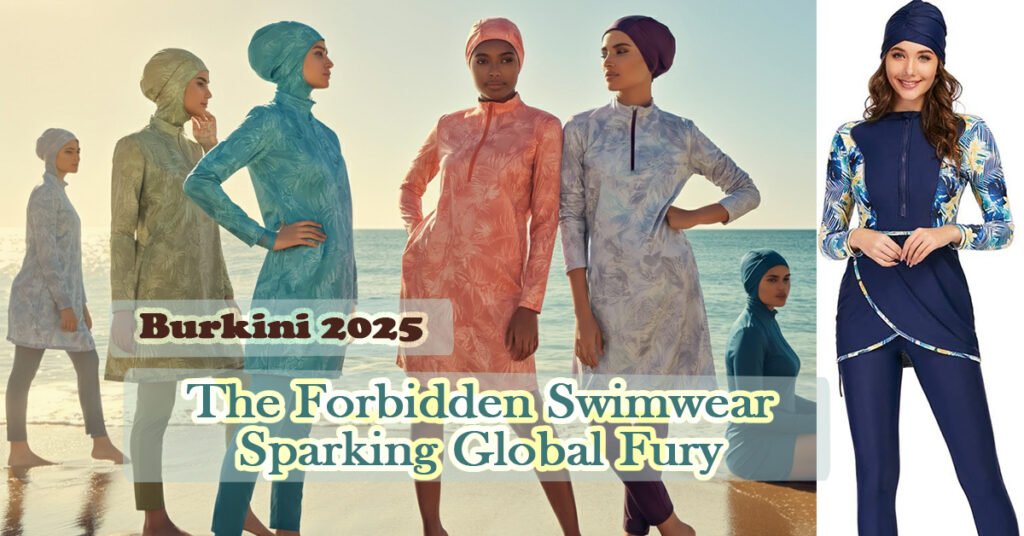Burkini 2025: The Powerful Intersection
A burkini is a type of swimwear designed to meet modesty standards, and it’s especially popular among Muslim women. The name combines “burka” and “bikini.” It’s made to cover the whole body except the face, hands, and feet. This is an excellent option if you want comfort and freedom in the water while respecting cultural and religious values.
History and Origin of the Burkini
The burkini, a mix of “burqa” and “bikini,” was created in the early 2000s in Australia by Aheda Zanetti to offer Muslim women a modest and sporty swimwear option. This is all about comfort, sun protection, and freedom to enjoy the water. Nowadays, the burkini is a favorite among people worldwide and reflects inclusivity and ethnic variety in fashion!
This article takes a closer look at the birkini—a swimsuit designed to offer modesty and comfort, letting everyone enjoy aquatic activities easily. The birkini promotes inclusivity by meeting various cultural and religious demands. This growing popularity empowers people, bridges cultural gaps, and creates fashion waves.
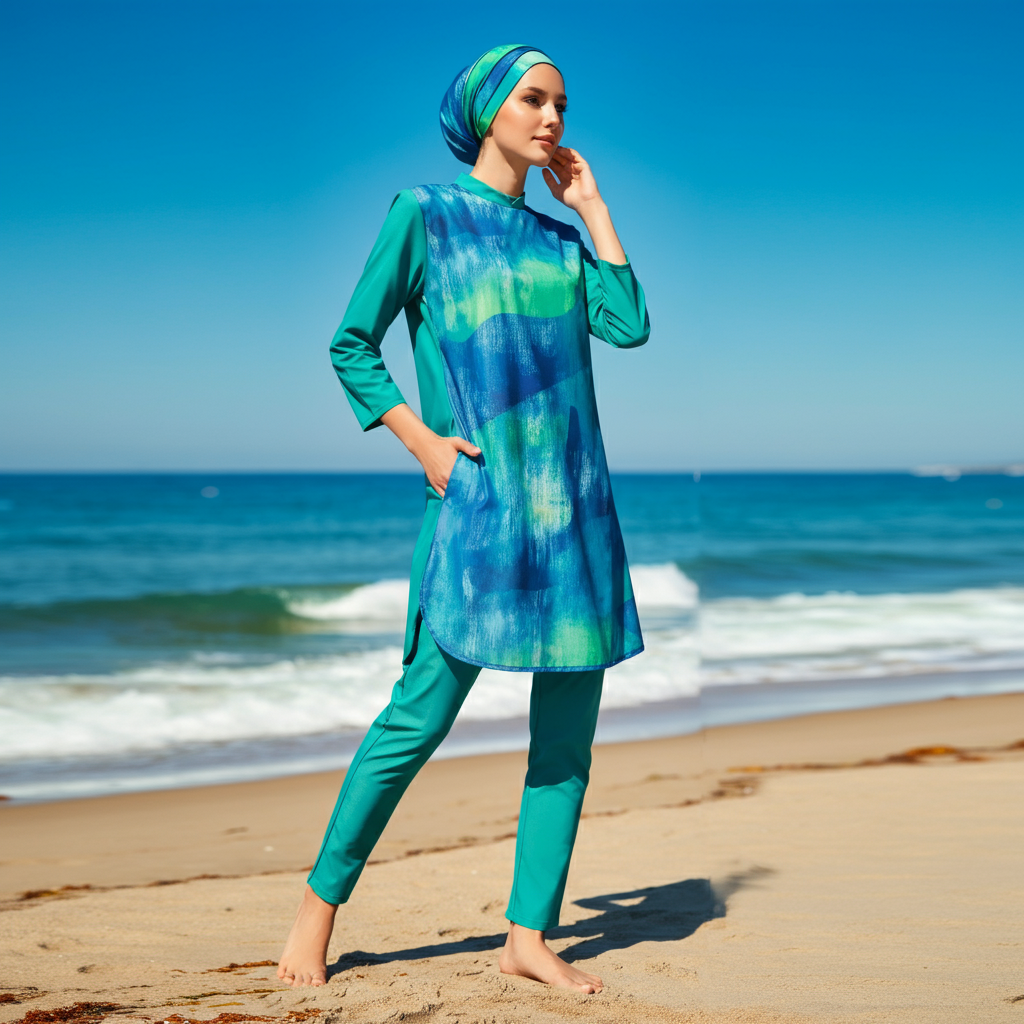
Understanding the birkini – Definition and Design
What Makes a Burkini Unique
A birkini is an excellent choice that blends elegance, functionality, and modesty. It is designed to cover the body except the face, hands, and feet, so it’s perfect for those looking for a respectful yet fashionable choice. birkini is made from lightweight, breathable fabrics. This will make you comfortable and offer sun protection.
Unlike traditional swimwear, the birkini is all about balance—blending fashion, function, and cultural considerations. It typically comes as a three-piece set with a tunic, trousers, and a head covering, ensuring comfort and flexibility. Quick-drying, UV-protective fabrics like polyester and spandex make it easy to move around while keeping your skin safe from the sun.
Whether at the pool or the beach, the birkini lets you enjoy the water confidently, offering a perfect mix of modesty, comfort, and modern style.
Types and Styles of Birkini
The birkini is highly versatile and can be modified to your requirements and style. Full-coverage burkinis give complete modesty with head-to-toe designs, while more moderate styles let you show a bit more, like your forearms or calves. If you are an active swimmer, sport burkinis are designed with materials that boost performance and flexibility. On the other hand, fashion birkini is all about style, featuring trendy patterns and cute embellishments for a chic beach vibe. Brands like Modanisa, Ahiida, and Lyra do a fantastic job of blending functionality with fashion, so birkini stay both modest and modern. Whether you’re hitting the waves or just relaxing by the water, there’s a burkini style perfect for you!
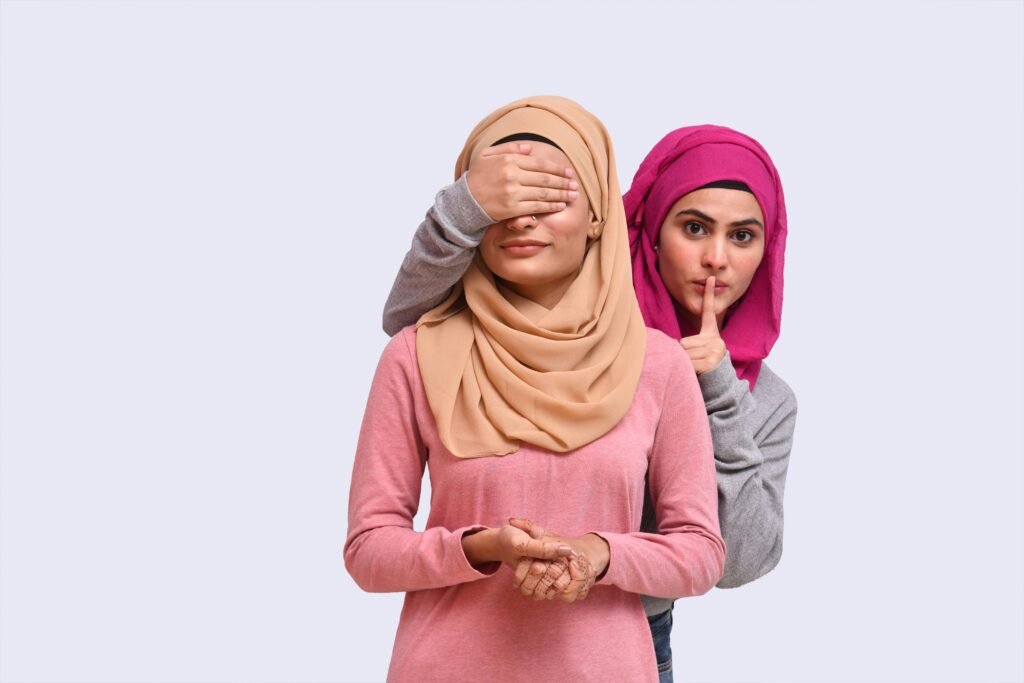
Cultural and Religious Dimensions
The Role of Modesty in Islamic Dress
Islam strongly believes in modesty, which is shown in casual clothes and swimwear. The burkini, a considerate swimsuit made for Muslim women to enjoy the water while following their beliefs, was inspired by the concept of hijab, which transcends traditional clothing. The burkini is a fantastic substitute for conventional swimwear, and this will give full body coverage while adhering to the Quran’s teachings on modesty. Islamic dress guidelines focus on comfort, usefulness, and modesty, allowing women to enjoy various activities without sacrificing their religious convictions.
Cultural Significance of the Birkini
The birkini has become a powerful symbol of female liberty for Muslim women worldwide. Combining religious modesty with cultural integration will help women maintain their religious convictions while participating in modern activities like swimming. birkini is available in various designs throughout locations, frequently showcasing regional textiles and fashions representing distinct cultural identities. This diversity shows how adaptable the birkini is, celebrating individuality while creating a sense of unity among Muslims globally. This growing popularity is a step toward more inclusive leisurewear in today’s multicultural societies.
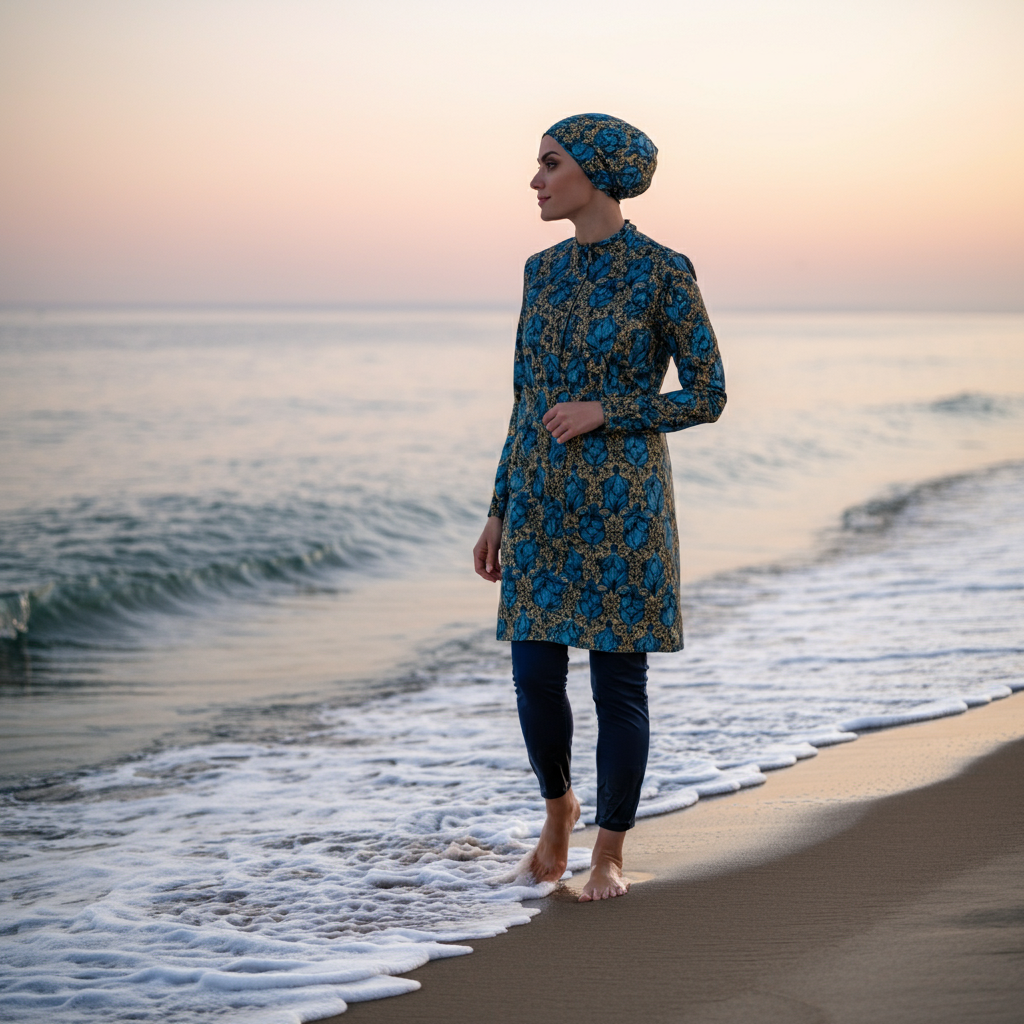
Global Reception and Societal Views
Western Perceptions and Misconceptions
Western views of the birkini is often shaped by stereotypes and media stories that portray it as a symbol of oppression. This can sometimes create misunderstandings and social tensions, as the cultural significance of the birkini isn’t always fully appreciated. Encouraging balanced education and open conversations can help build understanding and bring People closer together.
Birkini Bans and Legal Challenges
Human rights and freedom of speech have been hot topics of discussion and legal issues as a result of France’s and Germany’s burkini bans. Burkinis were banned in some French cities for secularism and security-related concerns. The country’s top administrative court ultimately declared that the restrictions violated fundamental rights and overturned them. Similar recommendations were made in Germany as well, sparking national debates. Other nations have struggled to balance individual liberties and cultural integration regarding birkini prohibitions. These incidents draw attention to a larger discussion about public policy and religious expression, highlighting the significance of developing well-considered solutions that uphold individual liberties and community values.
The Birkini in Sports and Public Life
Inclusion in Competitive Sports
The Birkini is an excellent step towards inclusivity in sports, empowering Muslim women by offering swimwear that respects their religious practices. While competitive regulations can sometimes make its adoption tricky, more and more Olympic and international guidelines are starting to embrace diverse apparel needs. This shift helps promote inclusion, allowing you to perform without compromising modesty. This is a win for greater participation in public sports and fostering cultural acceptance worldwide!
Accessibility in Public Pools and Beaches
The Birkini makes it easier to enjoy public pools and beaches by allowing modest swimwear that aligns with religious beliefs. Welcoming policies like this help create more inclusive public spaces, encouraging participation and social connection. This opens opportunities for diverse communities, promotes cultural acceptance, and supports a more active, inclusive society.
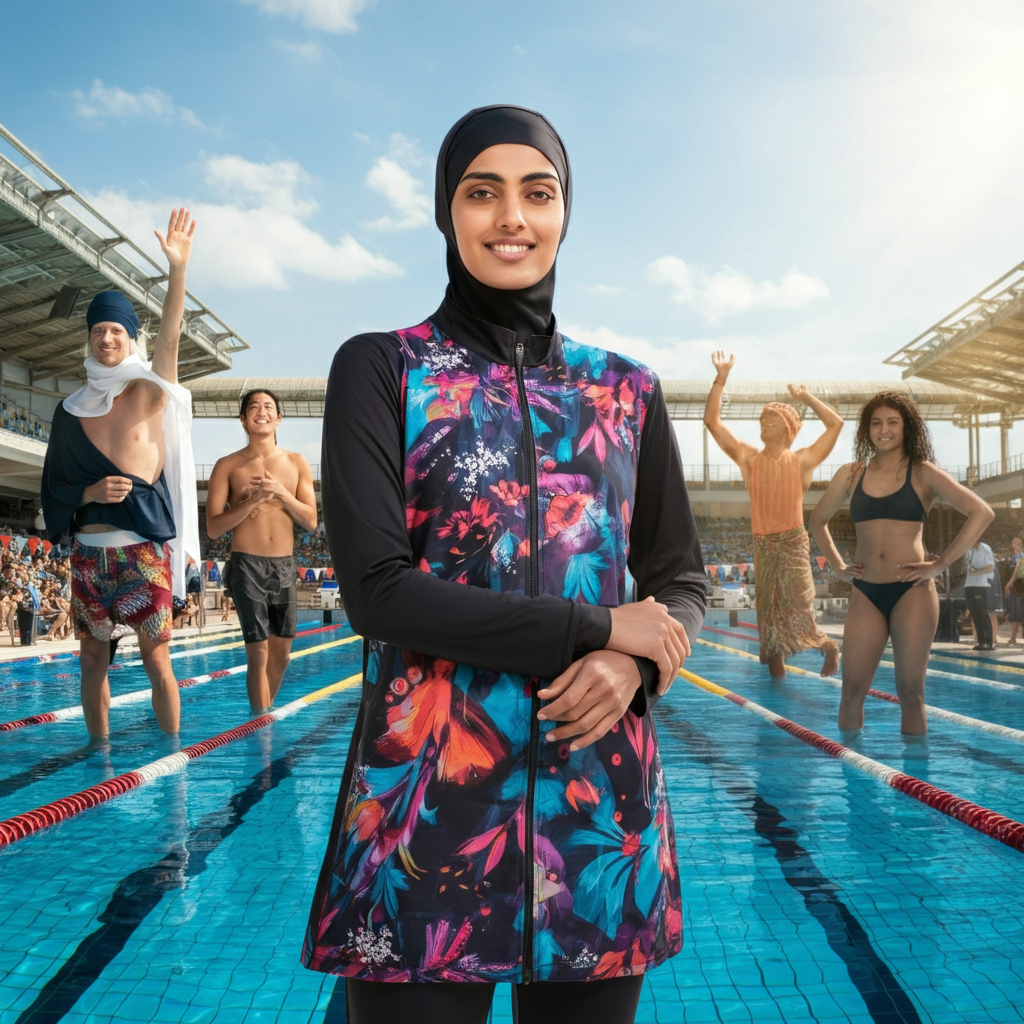
Fashion and Industry Trends
Evolution of Modest Swimwear
Modest swimwear, like the Birkini, has come a long way, growing from a niche market into a global trend. With innovative materials and designs, it caters to a wide range of cultural needs and modesty preferences, combining comfort, style, and functionality. This blend of tradition and modern style keeps you inspired and gaining popularity worldwide.
Birkini in the Fashion Industry
Birkini has become an elegant and modest fashion standard thanks to designer partnerships with luxury brands. With inclusive collections now appearing on the shelves of major stores, the retail industry is growing & showing a fantastic move toward embracing diversity. Also, e-commerce platforms are growing rapidly, making burkinis available globally and serving a diverse clientele.
Personal Narratives and Experiences
Voices of Birkini Wearers
Those who wear a birkini share amazing stories about how it maintains their identity while improving their confidence and making them feel protected. Even while there are still issues, such as misunderstandings in public places, these voices keep raising awareness and promoting acceptance while appreciating variety. These incidents serve as an example of the importance of respect and understanding for everyone.
Stories from Non-Muslim Burkini Users
Dive into inspiring stories of non-Muslim burkini users who love embracing body positivity and staying protected from the sun. If we see how this versatile swimwear has been adopted by Most of people from all kinds of backgrounds, celebrating inclusivity and confidence. Discover how burkinis can boost self-esteem while offering a stylish and safe way to enjoy the sun!
Conclusion
In swimwear, the burkini became a powerful choice and sign of empowerment. This unique style of wear blends current design with modesty, allowing women to show who they are without compromising their comfort or sense of taste. More than merely swimwear, this challenges conventional social standards and stands for individual freedom. The burkini highlights the importance of diversity and inclusivity in fashion as its popularity grows. The popularity of modest swimwear is increasing as more designers realize how important it is to provide inclusive solutions that meet a variety of cultures and tastes. The burkini shows how fashion may be inclusive in our changing world, creating a day when all women can enjoy swimwear that embodies their values and way of life.
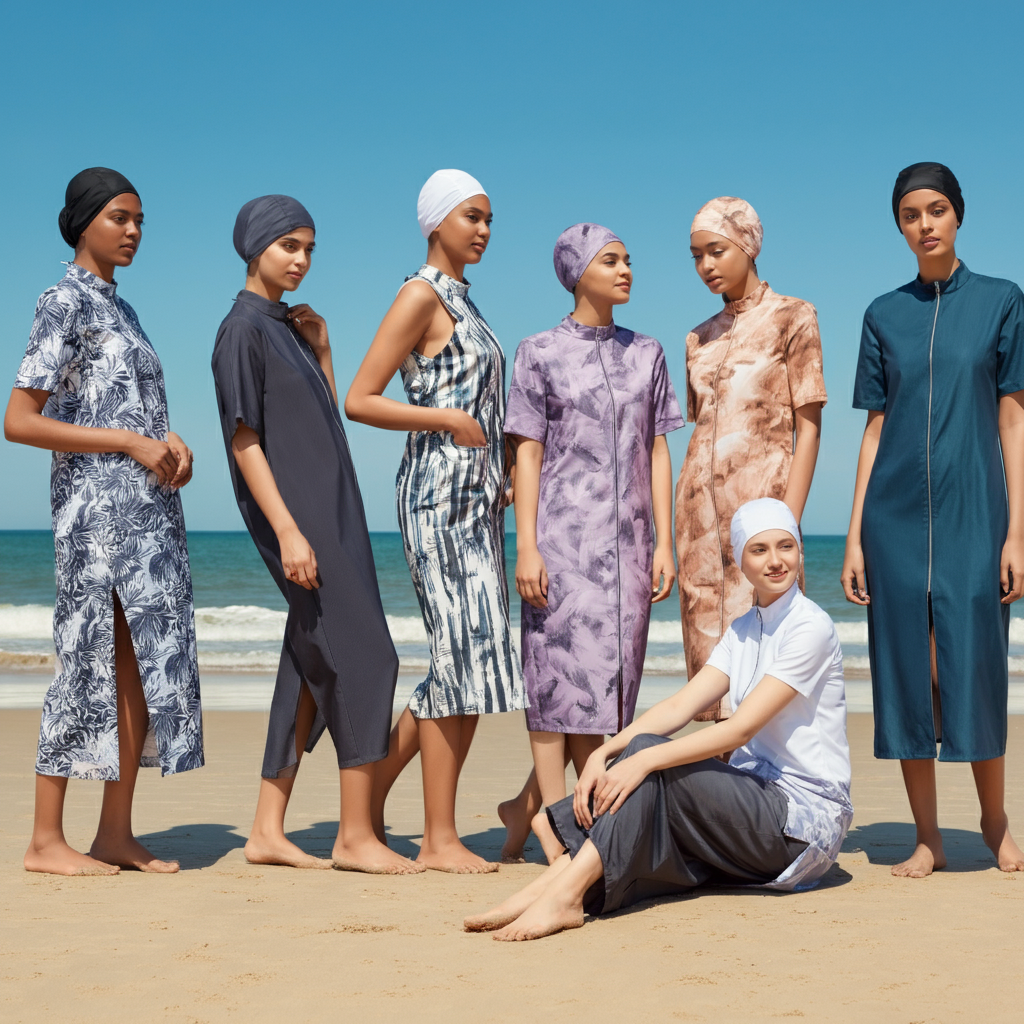
Frequently Asked Questions (FAQs)
Q1. Why do some Muslim women choose to wear a burkini?
Muslim women wear a burkini to observe their religious commitment to modesty (hijab) while enjoying swimming and water activities. 1. It enables participation in public aquatic spaces without compromising their values. For many, it’s an empowering personal choice that allows them to reconcile their faith with leisure. The burkini also offers sun protection and comfort. 2 Ultimately, it’s a multifaceted decision driven by religious conviction, personal agency, and the desire for inclusion
Q2. Where can I buy a burkini?
In the USA and European markets, burkini prices vary widely based on brand, material, and design. You can generally find them online on platforms like Amazon, Etsy, Modanisa, and specialized modest fashion websites.
Rates: Prices typically range from $30 to USD 200+ in the USA, and approximately €30 to €200+ EUR in Europe. Higher-end brands and those with special features like UV protection may cost more.
Q3. Are burkinis allowed in all public swimming areas?
While there isn’t a blanket ban or allowance across all public swimming areas, here’s a general overview for the USA and Europe:
USA: Generally, burkinis are allowed in most public swimming areas. Harassment or being asked to leave has been reported, but official bans are rare. Some private establishments might have their own rules.
Europe: The situation is more varied. In France, burkinis have been controversial, with some cities attempting bans, often overturned by higher courts citing fundamental freedoms. 1 Other European countries like Belgium and Germany have seen localized bans in some pools. However, these are not nationwide. 2 Some pools might have rules about swimwear material for hygiene and safety, which usually meet burkinis made of appropriate fabric.
Q3. How do I choose the right size and style of burkini?
To choose the right burkini, prioritize the brand’s size chart for accurate fit. Consider your desired coverage level (full, partial), style (one/two-piece), and fabric (chlorine/UV resistant). Read reviews for sizing insights. Ensure comfort and freedom of movement when swimming. Check return policies.
Q4. Can non-Muslim women wear burkinis?
Yes, non-Muslim women wear burkinis for reasons like sun protection, comfort, and personal preference. It’s a modest swimwear option that caters to a broader audience beyond religious observance, offering more coverage than traditional swimwear.
Q5. How do burkinis perform in sports settings like surfing or swimming competitions?
Burkinis can face challenges in high-performance sports. The looser fabric can increase drag in swimming competitions, potentially hindering speed. However, some athletic burkini designs use more streamlined, water-resistant materials. In sports like surfing, a well-fitted burkini can offer sun protection and coverage without significantly restricting movement, though it might not be the standard competitive attire. Rule changes in some amateur swimming organizations now allow burkinis, prioritizing inclusivity.
Q6. What are the common myths about burkinis?
Common myths about burkinis include the idea that they are solely a symbol of oppression, a security threat, or inherently unhygienic. In reality, many Muslim women choose to wear them for religious modesty, personal comfort, and to enable participation in aquatic activities. They are designed with swimwear fabric and do not inherently pose hygiene or security risks more than other swimwear.
Q7. Are burkinis chlorine-resistant and suitable for regular pool use?
Many burkinis are made with polyester and spandex-resistant fabrics, making them suitable for regular pool use. 1 Look for descriptions specifying “chlorine-resistant” when purchasing. Proper care, such as rinsing after swimming, will also help prolong their lifespan in chlorinated water.
Q8. What should I consider when caring for a burkini?
To care for your burkini, rinse it immediately after each use in cool, clean water to remove chlorine and salt. Hand wash gently with mild soap, avoiding harsh detergents or bleach. Do not wring or twist. Dry it flat or hanging in the shade, away from direct sunlight or heat. Avoid rough surfaces to prevent snagging.
Q9. What are the typical materials used to make burkinis?
Lightweight, quick-drying, and often chlorine-resistant fabrics like polyester and spandex blends.
Q10.What were some European countries’ arguments for and against the “burkini bans”?
Arguments For:
-
- Secularism (laïcité): Seen as upholding the principle of neutrality of the state regarding religion.
-
- Security: In the context of past terrorist attacks, some linked the burkini to religious extremism.
-
- Women’s Rights: Viewed by some as a symbol of female oppression and contrary to gender equality.
-
- Hygiene/Safety: Rarely a primary argument, but sometimes cited regarding pool regulations.
Arguments Against:
-
- Religious Freedom: Infringement on the right to practice religious beliefs.
-
- Discrimination: Targeting a specific religious minority and their clothing choices.
-
- Personal Autonomy: Restricting women’s freedom to choose what they wear.
-
- Counterproductive to Integration: Alienating and marginalizing Muslim women.
-
- Lack of Evidence: No concrete proof linking burkinis to security threats or hygiene issues.
